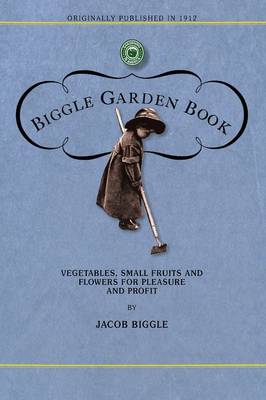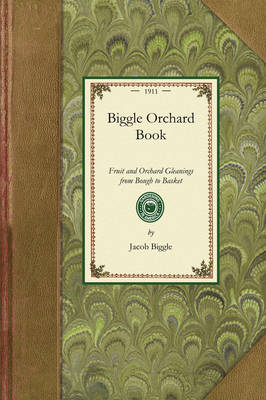Gardening in America
2 total works
When The Biggle Garden Book was first published in 1908, most people were in the habit of raising their own food and flowers. Jacob Biggle felt that a gardener's success had to do with willpower and passion rather than acreage. "The man, woman or youngster who really wants a garden, will somehow manage to have a good one regardless of soil conditions, bad weather, measles in the family, or whether the area of ground at hand is a square acre or a square rod," he wrote encouragingly at the start of the book.
That passion for gardening continues today in fields, backyards, and urban community plots across the United States. According to a poll taken in 2009 by the National Gardening Association, more than forty-three million households in the United States grow some of their own food. Learn how to do things the "old-school" way as Jacob and Harriet Biggle guide you through the fundamentals of:
Soil preparation, sowing, and planting
Hotbeds and cold frames
Fertilization, cultivation, and irrigation
Flower gardening with old-fashioned favorites
Garden pests and friends
With a resurgence in organic farming, heirloom varieties, and self-reliant living, The Biggle Garden Book is more valuable than ever because of the time-tested advice it offers.
That passion for gardening continues today in fields, backyards, and urban community plots across the United States. According to a poll taken in 2009 by the National Gardening Association, more than forty-three million households in the United States grow some of their own food. Learn how to do things the "old-school" way as Jacob and Harriet Biggle guide you through the fundamentals of:
Soil preparation, sowing, and planting
Hotbeds and cold frames
Fertilization, cultivation, and irrigation
Flower gardening with old-fashioned favorites
Garden pests and friends
With a resurgence in organic farming, heirloom varieties, and self-reliant living, The Biggle Garden Book is more valuable than ever because of the time-tested advice it offers.
"The first thing to do about starting an orchard is to plan for it," Jacob Biggle, the author of this handy little book, advises. "Put on your thinking-cap, study into the matter, and do not jump in the dark. A slow start is much better than a poor start. Harriet says that an orchard set in the right place, at the right time and of the right varieties, is worth just eleven times more than a hit-or-miss orchard. Where she secured the data for such exact figures, I do not know; but I am willing to admit that she is about right in this statement."
Once you've followed Harriet's advice and determined the site for your orchard, the next task is to decide what kinds of trees to plant in it and learn how to care for them season after season. The Biggle Orchard Book includes everything you need to know about nearly every fruit tree under the sun, and also those that produce nuts. It includes instructions on:
How to prune newly set trees
When to pick fruit
How to pack fruit for the farmer's market
And much more!
Written for backyard farmers, especially those interested in timeless orcharding techniques, The Biggle Orchard Book is an essential and charming addition to the home library.
Once you've followed Harriet's advice and determined the site for your orchard, the next task is to decide what kinds of trees to plant in it and learn how to care for them season after season. The Biggle Orchard Book includes everything you need to know about nearly every fruit tree under the sun, and also those that produce nuts. It includes instructions on:
How to prune newly set trees
When to pick fruit
How to pack fruit for the farmer's market
And much more!
Written for backyard farmers, especially those interested in timeless orcharding techniques, The Biggle Orchard Book is an essential and charming addition to the home library.

